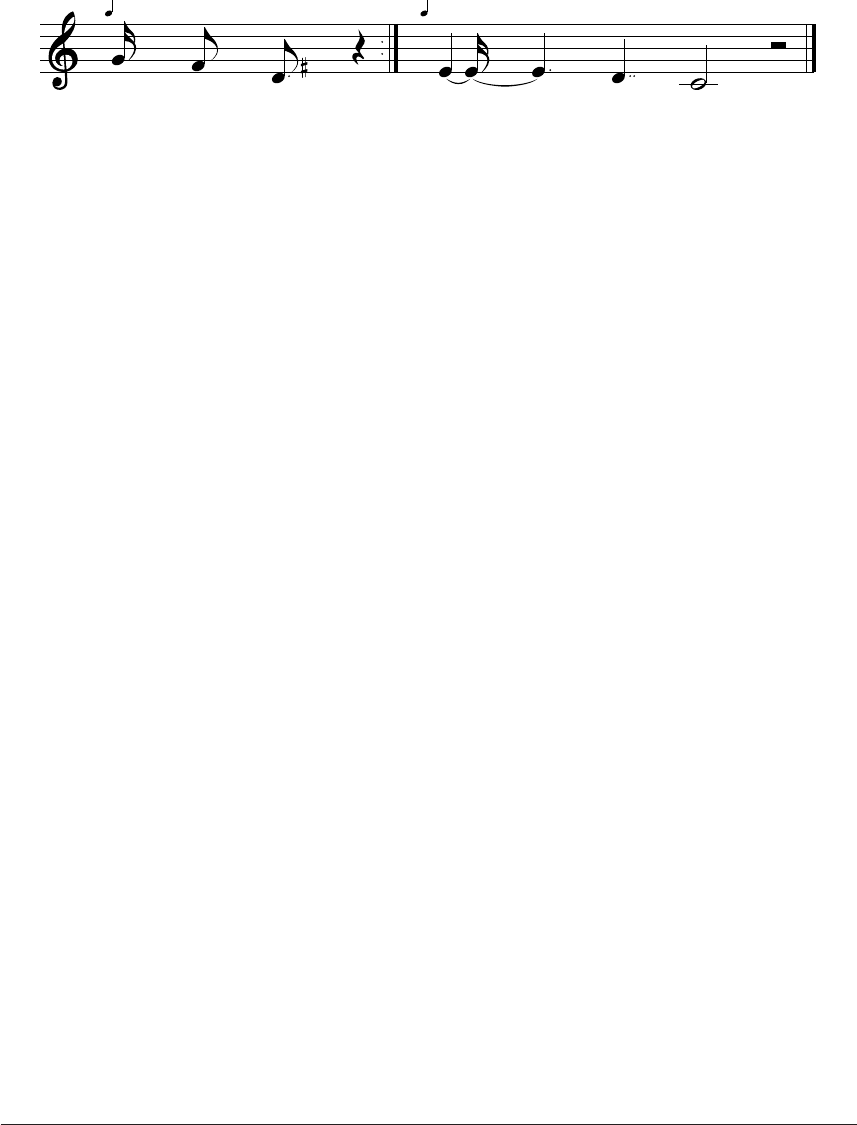
CHAPTER 11: MELODY ASSEMBLER
270 EPSON S5U1C63000A MANUAL
(S1C63 FAMILY ASSEMBLER PACKAGE)
11.4.3 Method of Creating Melody Data
The following shows the method of creating melody data according to the creation procedure.
(1) Writing score
Describe music to be played with the S1C63xxx in the form of a score as shown below.
Example of score
=
.
.
40.0
=
.
.
80.0
<1> <2>
<3> <4> <5> <6> <7> <8> <9>
<10> <11>
(2) Creating melody data
Create a melody data based on the score using a general-purpose editor.
Example of melody data
; melody sample file Description from ";" to the end of the line is skipped as it is
regarding as a comment.
TEMPO Start mark of tempo data (It cannot be omitted.)
; m0-tempo 0, 1
TEMPO 0 0 = 4 TEMPO 0 1 = 10
<1> Tempo 0 of the melody No.0 (m0) = 4 <2> Tempo 1 of the m0 = 10
END End mark of tempo data (It cannot be omitted.)
MAIN Start mark of main data (It cannot be omitted.)
; no. cntl note pitch jump tempo The data order is melody data No., control bit, note data,
; m0 test pitch data, jump bit and tempo No. from the left.
0 1 7 G5 0 0 <3>
1 1 6 F5 0 0 <4>
2 1 5 D5# 0 0 <5>
3 2 4 RR 1 0 <6>
4 0 3 E5 0 1 <7>
5 1 2 E5 0 1 <8>
6 1 1 D5 0 1 <9>
7 1 0 C5 0 1 <10>
8 3 0 RR 1 1 <11> The jump bit in the last data of a melody should be set to "1" if data is a rest.
END End mark of main data (It cannot be omitted.)
CONTROL Start mark of control data (It cannot be omitted.)
m0 Melody number (m0–m15)
0 This means that the m0 begins from 0 <3> in the main data.
0
4
END End mark of control data (It cannot be omitted.)
∗ Either capital letters or small letters can be used for describing melody data.


















